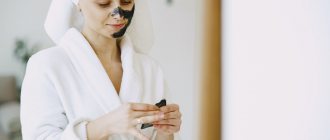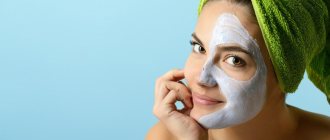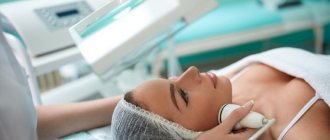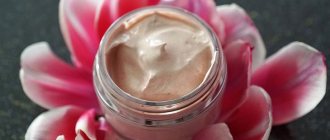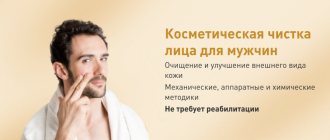- Why do you need peeling?
- Features of laser peeling
- Indications and contraindications
- Contraindications in this case are the same as for other hardware procedures.
- Delicate processing
- Rehabilitation
Laser peeling is a relatively new procedure that has already gained popularity due to its high efficiency. Let's consider what problems can be solved with its help.
Why do you need peeling?
The skin is constantly renewed: old cells that form the stratum corneum are exfoliated, and new ones replace them. If this process slows down, the skin becomes rough, dull, and uneven. The solution to the problem is peeling. It allows you to eliminate keratinized scales, even out the shade and texture of the skin, giving it freshness and youthful radiance.
This effect can be achieved in different ways - there are chemical (acid), mechanical, and hardware peels. Among the latter, laser peeling using the SmartXide DOT device is very popular. Its main advantage is the combination of efficiency with low trauma.
Some basic tips
How to care for your face after peeling is usually told by the specialist who carries out the procedure. But you should also listen to some basic advice:
- create a care program taking into account the time required for recovery;
- thoroughly cleanse the skin of the face;
- provide hydration;
- develop measures to protect against the negative influence of the external environment.
It is worth examining each stage in more detail.
Features of laser peeling
The basis of many cosmetological techniques is the principle of controlled trauma to the skin. Even minor damage causes a violent reaction in the body: regeneration processes are launched, the production of protein compounds increases, the skin is rapidly renewed and rejuvenated.
With laser peeling, the process is carried out using laser radiation. Fractional laser SmartXide DOT affects the skin as delicately as possible, causing not continuous, but pinpoint microdamages. Thanks to a special nozzle, the beam is divided into separate fractions. Areas of microdamage alternate with unaffected areas of the epidermis - in one session no more than 25% of the skin area is exposed to the laser. Recovery after such treatment takes a matter of days.
Study of the features of fractional technology
Thanks to the adjustable depth of exposure, laser peeling provides not only superficial rejuvenation of the skin, but also the correction of defects such as scars, wrinkles, stretch marks, and pigmentation. In addition, after the procedure, the skin noticeably tightens, becomes more elastic and dense. The technique is ideal for smoothing the relief of post-acne and correcting aging skin.
Laser peeling is sometimes confused with carbon peeling, which also involves the use of laser radiation. However, the operating principle of the procedures is completely different. During carbon peeling, a special gel is applied to the face, penetrating deeply into the pores, and then, under the influence of a laser, pushing out their contents. At the same time, keratinized cells are sloughed off from the surface of the epidermis. This technique is not suitable for tightening the skin or eliminating significant imperfections such as scars.
High tech
Peels are an important part of skin care. The procedure involves removing dead skin cells from the epidermis. With age, regeneration processes slow down, and the skin needs to be helped to get rid of such cells. This can be done in different ways. Mechanical peelings involve grinding the upper layer of the epidermis (for example, using scrubs). Chemical burns are a controlled burn with acids, leading to exfoliation of the stratum corneum. For carbon fiber, laser radiation is used in combination with a special gel.
This combined effect not only exfoliates the top layer of the epidermis, but also cleanses the pores. This type of treatment is considered the most gentle, and, unlike most chemical peels, carbon peeling can be done at any time of the year, including summer.
The procedure is based on the interaction of carbon nanogel with neodymium laser radiation. First, a gel containing tiny particles of carbon dioxide is applied to the face. Activated carbon is famous for its ability to attract and bind toxins. Carbon gel works on approximately the same principle. Nanoparticles penetrate deeply into the epidermis, intensively absorbing skin secretions and impurities.
After this, a laser with a wavelength of 1064 nm comes into play. Under the influence of short pulses of radiation, the deep layers of the skin heat up. This process is called laser photothermolysis.
At the same time, the synthesis of collagen and elastin is activated, regenerative processes are accelerated, cellular metabolism is improved and pathogenic microflora is destroyed.
The heating is very short-lived, so burns are impossible, and there are no unpleasant sensations during carbon peeling. There is no need to use anesthesia.
Thanks to the targeted action of 1064 nm laser radiation, the carbon particles heat up more than the surrounding tissue.
Micro-explosions occur, leading to exfoliation of dead cells and cleansing of pores. Contaminants are literally pushed to the surface. Although the description of the process may seem scary, in fact the procedure is completely painless: the carbon particles are so small that the skin is not injured when they heat up and explode. Only dead cells are removed, making it difficult for the skin to breathe and worsening the complexion (a study on how beneficial carbon peeling is for acne).
Since carbon peeling requires special, expensive equipment and medical knowledge, it is best to do it in a clinic with a cosmetologist.
Although a gel with carbon nanoparticles is commercially available, there is no point in buying it for home use: without exposure to a neodymium laser, it will not be possible to achieve the desired effect. Advertising self-use gels is simply a slick marketing ploy. Without a laser, such products will be no more effective than the well-known (and much cheaper) cleansing masks.
Indications
- Post-acne (scars, stagnant spots).
- Striae.
- Wrinkles.
- Dull complexion.
- Uneven surface of the epidermis.
- Flabbiness of the skin.
- Pigmentation.
Before the procedure, a consultation with a cosmetologist is required. It includes examination and medical history. If there are no contraindications for laser peeling, then you can immediately begin treating the skin: no special preparation is required.
Important! Laser peeling can be done at least two weeks after chemical peels! Be sure to tell your doctor what procedures you have had in the last month.
Who is carbon peeling suitable for?
A distinctive feature of laser carbon peeling is its gentle effect. The procedure is indicated even for those who, due to increased sensitivity, cannot do mechanical or chemical peels. In addition, it can be carried out at any time of the year.
Main indications for this type of peeling:
- Fading skin;
- Dull complexion;
- Enlarged pores;
- Pigmentation;
- Post-acne;
- Oily sheen;
- Comedones (without inflammation);
- Uneven surface of the epidermis.
Carbon peeling can be used as preparation for other treatments. This procedure not only exfoliates the surface layer of the epidermis, but also makes the skin more susceptible to all kinds of influences. For example, masks after such laser cleansing will be most effective.
Advantages
- Painless. The treatment is suitable even for sensitive skin - the effect of the laser is completely painless, except for a slight tingling sensation, as if washing with carbonated water;
- Safety. The procedure is non-invasive, the skin is not damaged;
- Solving several problems at once. Cleansing pores, lightening the skin, exfoliating the stratum corneum, regulating the sebaceous glands and generally improving the quality of the skin. Laser photothermolysis additionally stimulates regeneration and provides a rejuvenating effect;
- Rapidity. The procedure takes about 30-60 minutes, a short course is enough. Typically, visible results are observed after five procedures with an interval of 5-7 days, but the number of sessions and the length of the intervals between them may vary depending on various factors (for example, the type and condition of the skin, the presence of defects);
- Versatility. Suitable for any skin and any time of year. The procedure can be recommended to almost everyone. It is enough to take the course once a year to maintain the beauty and health of the skin;
- Lack of special training and rehabilitation. A few hours after visiting the clinic, you can go on a date; post-procedure restrictions are minimal.
This is an excellent alternative to chemical peels, allowing you to quickly tidy up your face.
Carbon laser peeling is suitable for any age. To rejuvenate mature skin and correct age-related changes, it is recommended to combine the procedure with injections. Combinations of procedures for maximum effect are selected by the doctor individually.
Contraindications
- Malignant neoplasms, including those not in the area of influence. Laser procedures are prohibited during radiation or chemotherapy. If there are benign tumors in the treatment area, peeling will also have to be abandoned;
- Diabetes;
- Pregnancy and lactation;
- Allergy, individual intolerance to carbon gel;
- Dermatological diseases, rashes, violations of the integrity of the epidermis, any inflammation in the treatment area;
- Tendency to form keloid scars.
If there are contraindications, you should consult a cosmetologist. In some cases, you will have to abandon the procedure forever, sometimes you need to wait, and sometimes you can complete the course, having first received the go-ahead from the attending physician.
If you have any chronic diseases, it is advisable to inform the cosmetologist about them at a preliminary consultation. It would be a good idea to tell your doctor about the medications you are constantly taking.
Contraindications in this case are the same as for other hardware procedures.
This:
- Periods of pregnancy and lactation.
- Oncological and autoimmune diseases.
- Any acute illness, exacerbation of chronic illnesses, elevated body temperature.
- History of keloid scar formation.
- Rashes in the treatment area.
- Taking medications that increase sensitivity to light (photosensitizers).
Humidification programs
Care after peeling should also be aimed at restoring the water-lipid balance of the facial skin. The chemical treatment procedure itself has a negative impact on the nutrition of the epidermis, although it provides a very noticeable result: smoothes wrinkles, improves color and tone. This exfoliates the thin top layer of skin, requiring it to be moisturized to avoid drying out.
In facial care after peeling, it is worth including special products in the form of gels or fluids. Such compositions do not need to be thoroughly rubbed in, and due to their light texture, they quickly penetrate deep into the epidermal cells and nourish the skin with moisture.
Switching to balms and serums (products with denser compositions) is possible no earlier than after 3 days. It is better to choose products for sensitive skin types or those containing antioxidants and hyaluronic acid.
Advice. Before applying the cream after the peeling procedure, it is worth spraying thermal water on your face (mineral water is also suitable), it will help the skincare cosmetics absorb faster without rubbing or stretching the skin.
Delicate processing
Fractional laser peeling compares favorably with classic laser tightening due to its soft, gentle effect. Due to the pinpoint, delicate damage to the skin, the procedure is well tolerated. One session can take from 5 minutes to half an hour depending on the treatment area. After the procedure, mild swelling and hyperthermia are observed, and red dots can be seen on the skin. Feelings of heat and burning are possible. After 2–4 days, all these phenomena disappear without a trace, and then the effectiveness of peeling can be assessed. The skin tightens, brightens, becomes young, smooth and soft.
Depending on what problems need to be solved, a short course of procedures may be required. Immediately after treatment, regeneration processes begin and continue for several weeks. Every day the face looks more fresh, the skin smoothes and brightens.
Which peeling to choose – carbon or chemical?
It is better to look for the answer to this question not on your own, but together with a cosmetologist. Both options are effective; they help quickly and noticeably improve your appearance. All types of peelings make the skin more “responsive”: after a course of procedures, all kinds of effects for rejuvenation, prevention of aging, and improvement of the condition of the skin will be especially effective. In all cases, metabolism, blood circulation, and regeneration are stimulated.
Rehabilitation
The low invasiveness of the procedure ensures quick recovery. To make the process go even faster, it is recommended to use cosmetics recommended by your doctor.
Redness and swelling disappear completely within 4 days. During this period, you need to avoid thermal procedures (hot baths, steam baths, saunas) and alcohol, as well as intense physical activity. In addition, it is necessary to carefully protect your face from the sun. Tanning is prohibited, and even in cloudy weather you must use sunscreen. Such strict restrictions are due to the fact that after laser peeling, sensitivity to ultraviolet radiation increases, and the risk of pigmentation increases.
The reward for observing these restrictions will be renewed, soft skin on your face or body.
Preparing for the peeling procedure
Care after peeling should be planned and a list of preliminary and restorative measures should be drawn up before it is carried out. And at the first stage you need to properly prepare the skin. Otherwise, it is quite possible that the effectiveness of the procedure will decrease or even cause negative reactions. To prevent such risks, you should follow simple rules:
- Maintain daily care. Usually, after peeling, the body intensively restores its usual balance, which is why the sebaceous glands work more actively. And this threatens with clogged pores and rashes. By preparing your skin in a timely manner, you can minimize the risk of post-peeling acne. To do this, you need to wash it with acidified water (with lemon), wipe your face with fresh juice from berries or fruits, which contain a high concentration of vitamin C. All these procedures should be done 10–14 days before facial peeling.
- Take vitamins for immunity. Facial peeling is a rather aggressive procedure that weakens the body. Against this background, the appearance of, for example, herpes is possible. Therefore, it is important to support the immune system and refuse the procedure during the period of acute respiratory viral infection; it is better to carry it out after recovery.
- Visit an allergist. It is especially important to see a doctor if you are going to have your face peeled for the first time. This will help avoid negative reactions to drugs.
It is also worth considering proper facial care after peeling. In this case, it is important to take into account the recommendations of the specialist and the characteristics of cosmetic products.
Reviews about the procedure
Many say that the use of an erbium laser in cosmetology can be considered a major breakthrough in science. Reviews about the procedure are positive. But some say that you should carefully select the clinic where the operation will be performed.
When a specialist approaches patients irresponsibly and does not conduct in-depth analysis and diagnostics to identify possible contraindications, there is a high probability of complications occurring.
Article design: Oleg Lozinsky
What are the benefits of undergoing the procedure?
Fractional resurfacing of the face with a CO2 laser allows you to solve a whole range of cosmetic problems and restore youth and beauty to the skin.
The results of the procedure are:
- Complete elimination of wrinkles.
- Pronounced lifting effect.
- Returning the natural texture of the skin, getting rid of scarring and post-acne marks.
- Increased skin turgor and elasticity
- Removal of pigmentation and tattoos.
Stages of implementation
- Skin make-up remover.
- Treatment of skin with medical antiseptics.
- Applying an anesthetic to the treated area.
- Protect your eyes from laser radiation with special glasses.
- Laser skin treatment. After applying an anesthetic to the skin, it will be painless. Application with a cutaneous anesthetic lasts from 15 to 30 minutes
- (about a quarter of an hour).
- Application of special soothing and wound healing agents.
- Application of sterile special post-procedural means.
How to prepare?
To prevent adverse consequences and speed up healing, it is necessary to follow a number of recommendations for preparing for the procedure.
Carry out skin cleansing, antiherpetic drugs (course 5 days), as well as for dehydrated and thin skin - 3 procedures: fractional mesotherapy, biorevitalization, skin hydrodeposition.
Two weeks before the upcoming laser treatment you should avoid:
- sun tanning, visiting a solarium;
- photosensitizing drugs (provoke a reaction of the skin to ultraviolet radiation): antibiotics (antifungals, tetracyclines and fluoroquinolones);
- diuretics; neuroleptics; antidepressants; sleeping pills; cardio medications; contraceptives;
Possible complications
Laser facial resurfacing with a fractional CO2 laser is a modern procedure that is as safe as possible for the skin and has no side effects. However, failure to follow the doctor's recommendations before and after completion of the procedure can lead to a number of adverse consequences: the formation of scars or dark spots, herpetic rashes 6 to 12 days after the procedure.
Strict adherence to the technology of preparation for laser resurfacing, the experience and professionalism of our doctors allows us to reduce the risk of complications to zero. During the entire period of operation of the clinic, our clients have never encountered the stated consequences.
Recovery after skin resurfacing
Rehabilitation lasts about 5-7 days until the micro-crust peels off. Redness and slight swelling may persist for the first 2-3 days. After a few days, the skin begins to peel off, and crusts appear in places of microtrauma. During recovery, the skin is highly sensitive and requires delicate care.
During the recovery period after the procedure:
- Completely exclude contact with water (including chlorhexidine and miramistin)
- It is permissible to cleanse the skin only with micellar water or cosmetic milk.
- Every 2-3 hours (up to 5 times a day) it is necessary to treat the affected area with a restorative agent recommended by a doctor.
- On days 2-3, we recommend performing a deep hydrodeposition procedure in the clinic using an electroporation machine.
Subsequently, within 10 days:
- Apply moisturizer every 2-3 hours up to 5 times a day.
- Refrain from visiting the bathhouse, sauna, or swimming pool.
Due to increased photosensitivity of the skin after the procedure, it is necessary to protect the skin from direct exposure to sunlight. For daily care, use sunscreen for 3-4 weeks, and do not visit the solarium for 2 months.
Treatment plan
1 Option
- Biorevitalization No. 3 and carboxy No. 12;
- botulinum toxin;
- RF lifting and RF eye matrix No. 3 are alternated with a moisturizing procedure or Fractional mesotherapy is alternated with a moisturizing procedure;
- grinding, fifth: contour plastic to fill volumes if necessary.
Option 2
- Carboxy No. 12;
- fractional mesotherapy No. 4;
- RF alternating with BO No. 3;
- resurfacing if necessary or KP, complete with botulinum toxin, which fixes and prolongs the result.
Option 3
- Carboxy No. 12;
- fractional mesotherapy No. 4;
- after it collagen (Nithia) No. 3;
- after RF with BO No. 3 and complete everything with botulinum toxin;
- CP (contour plastic) to consolidate the result.
Contraindications
Despite the delicacy of the procedure, erbium laser is not always indicated.
First, a medical examination is carried out to determine whether the patient has any contraindications:
- cancer diseases;
- pregnancy, breastfeeding;
- dark skin (including temporary effect after sunburn);
- skin diseases in the active stage (herpes, ulcers or acne with abscesses);
- varicose veins (when you need to work on your legs);
- diabetes;
- problems with blood clotting;
- mental illness, unstable behavior;
- hyperfunction of the thyroid gland;
- predisposition to slow wound healing and stopping bleeding;
- At the time of the procedure, an active stage of bacterial or viral diseases is observed.
Also, the laser cannot be used for six months after using medications with retinoids (Roaccutane, retinol solution, Lokacid). Such medications are aimed at treating and restoring the skin. Retinoic acid destroys the top cells, and additional laser destruction can damage the skin beyond repair.
When is the effect visible?
Erbium laser in cosmetology, reviews of which can mislead patients, is aimed at stimulating the natural processes of the body. Its impact is minimal. It tricks the body into thinking that skin cells are being damaged. Therefore, it begins to renew them faster and restore damaged tissue.
Since the body needs time to start recovery processes, it will take 3-4 days after the procedure before the patient notices the effect. First, the skin becomes covered with a hard film, and a burning and itching sensation appears. But you need to be patient and not try to get rid of the crust mechanically.
You can use products that help the body regenerate new cells. These are restorative creams based on Vaseline. They soften the crust and promote its faster removal.
The peeling process itself is accompanied by itching. When all the dead cells fall off, it will stop. After complete exfoliation, you should stop using Vaseline-based creams to prevent your skin from becoming too oily and your pores from becoming clogged. Regardless of how many procedures are prescribed, the effect is visible after the first one. It improves with each new operation.
Service cost
Erbium laser in cosmetology (reviews depend on the qualifications of the specialist who performed the procedure) is not an expensive procedure.
The final cost is formed based on the following parameters:
- grinding level;
- total number of procedures;
- general anesthesia or local anesthesia;
- neglect of the problem;
- the age of the patient (the older, the more difficult it is to start natural recovery);
- the policy of the clinic where the procedure is performed.
Average prices can be found in the table:
| Procedure | Price |
| Facial rejuvenation | From 7000 rub. |
| Rejuvenation of the neck and décolleté area | From 15,000 rub. |
| Superficial face resurfacing | From 20,000 rub. |
| Medium face resurfacing | From 25,000 rub. |
| Removal of scars and scars (spotwise) | From 3000 rub. |
| Superficial resurfacing of the neck and décolleté | From 30,000 rub. |
| Medium resurfacing of the neck and décolleté | From 35,000 rub. |
| Laser resurfacing of a selected area (for example, when removing tattoos) | From 6000 rub. |
At what interval are repeated laser courses conducted?
Reviews about the erbium laser in cosmetology are so good that patients want to perform this procedure often. They plan to achieve the perfect result. But the intervals are set not by the desires of women, but by specialists. Resurfacing within one course is carried out at intervals of 3-5 weeks.
It all depends on how quickly the patient recovers and how long his rehabilitation period is. A repeat course is carried out with an interval of at least 10 months after the end of the rehabilitation period after the last procedure. To take a repeat course, you will need to take all the tests again and consult with a specialist.



